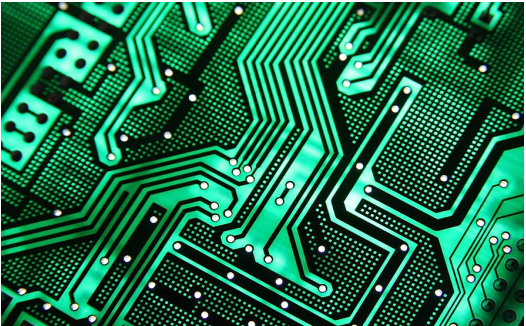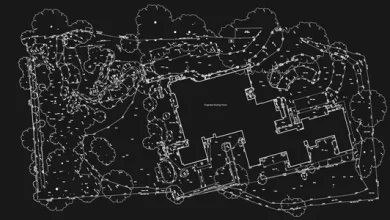Table of Contents
High Speed PCB Design is the process of creating a PCB using high speed tools and equipment. This can be used to create PCBs that are faster and more efficient than traditional PCBs.
What is High Speed PCB Design?
High speed PCB design generally refers to printed circuit boards (PCBs) that are designed to support high-speed electronic signals. These types of PCBs are often used in applications where data transfer rates are high, such as in computer networking or data storage devices.
There are a few key considerations that must be taken into account when designing high speed PCBs, such as trace width, trace spacing, dielectric material and signal integrity. Trace width is the width of the copper trace that forms the electrical connection between two components on the PCB. Trace spacing is the distance between two traces.
Dielectric material is the insulation that surrounds the trace and prevents electrical interference between the different traces on the PCB. The dielectric constant (Dk) of the material is an important consideration, as it determines how much signal loss occurs as the signal travels through the material.
Signal integrity is a measure of how well an electronic signal can be maintained over long distances. It is affected by a number of factors, such as trace width, trace spacing, dielectric material and PCB layout.
High speed PCBs must be designed with these considerations in mind in order to function properly.
The Benefits of High Speed PCB Design
High speed PCB design is a process of designing printed circuit boards with the intention of supporting high speed electronics. The term generally refers to digital electronics, such as microprocessors and memory chips, that operate at high frequencies.
The benefits of high speed PCB design include:
- Increased Performance
High speed PCB design can increase the performance of digital electronics by reducing the time it takes for signals to travel between components. This is because the electrical traces on a high speed PCB are designed to be shorter and have less impedance than those on a standard PCB.
- Reduced Signal Loss
Another benefit of high speed PCB design is reduced signal loss. This is because the electrical signals on a high speed PCB are less likely to be distorted as they travel between components. This is due to the fact that the traces on a high speed PCB are designed to be narrower, which reduces the amount of capacitance between them.
- Increased Reliability
High speed PCB design can also increase the reliability of digital electronics. This is because the components on a high speed PCB are less likely to overheat and fail due to the increased heat dissipation that is possible with this type of PCB.
- Improved EMI Immunity
Another benefit of high speed PCB design is improved EMI immunity. This is because the components on a high speed PCB are less likely to be affected by electromagnetic interference. This is due to the fact that the traces on a high speed PCB are designed to be narrower, which reduces the amount of inductance between them.
- Cost Savings
Finally, high speed PCB design can also save money. This is because the manufacturing process for this type of PCB is typically less expensive than that for a standard PCB. This is due to the fact that high speed PCBs generally require fewer layers, and the traces on a high speed PCB can be made narrower without sacrificing performance.
The Challenges of High Speed PCB Design
High Speed PCB design is becoming increasingly important as more and more electronics are designed to operate at higher speeds. There are a number of challenges that need to be considered when designing high speed PCBs, and these need to be taken into account during the design process in order to ensure that the finished product performs as intended.
One of the biggest challenges is signal integrity. At high speeds, signals can become distorted and this can lead to errors. The way in which a signal travels through a PCB can also affect its integrity, and this needs to be carefully considered during the design process. Another challenge is crosstalk. This is when signals from one trace affect another trace, and can again lead to errors. This is often a problem at high speeds, as the signal transition times are shorter, meaning that there is less time for the signal to settle before it is affected by another signal.
Designing for high speed is not easy, and there are a number of challenges that need to be considered. However, with careful planning and attention to detail, it is possible to produce high quality, high speed PCBs that meet the requirements of the end user.
The Process of High Speed PCB Design
Today, the term “high-speed” is used to define a number of factors in the world of electronics. When it comes to printed circuit boards (PCBs), high-speed refers to the rate at which data can travel through the board. The data rate is determined by the electrical properties of the board material, the routing of the traces, and the design of the board layout.
With the ever-increasing demand for faster data rates, the need for high-speed PCB design has never been greater. In order to meet the challenge, designers must have a thorough understanding of the design and fabrication process.
The first step in high-speed PCB design is to select the right board material. The material must have the proper dielectric constant and loss tangent to support the desired data rate. In addition, the material must be able to dissipate heat quickly to avoid any thermal issues.
Once the board material has been selected, the next step is to route the traces. The trace width and spacing must be carefully calculated to support the desired data rate. In addition, the trace routing must be carefully planned to minimize crosstalk and ensure signal integrity.
The last step in the high-speed PCB design process is to design the board layout. The layout must be carefully planned to minimize signal delay and crosstalk. In addition, the power and ground planes must be carefully designed to minimize noise and ensure power integrity.
With the ever-increasing demand for faster data rates, the need for high-speed PCB design has never been greater. By following the proper design and fabrication process, designers can create PCBs that can support the most demanding applications.
The Future of High Speed PCB Design
The future of high speed PCB design is looking very promising. With the advent of new technologies, such as 3D printing, it is becoming increasingly easier and more affordable to produce high quality PCBs. In addition, the use of advanced materials, such as carbon fiber and Kevlar, is making it possible to create lighter and stronger PCBs. This means that high speed PCBs can be designed for a variety of applications, including aerospace, automotive, and medical.





